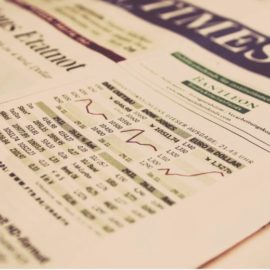
What is the traditional economics theory? What two claims does the efficient market hypothesis consist of?
In Misbehaving, Richard H. Thaler discusses two key components of traditional economics to back up why he’s against it. These components are the premise of constrained optimization and the efficient market hypothesis.
Learn more about the foundations of the traditional economics theory below.
1. The Premise of Constrained Optimization
Thaler explains that the first foundational principle of the traditional economics theory is the premise of constrained optimization, which contends that consumers with a limited budget always make decisions that optimize it. In other words, they act rationally, and their decisions always maximize economic value based on their available budget.
To see how this works in practice, imagine that you were purchasing groceries on a $100 budget. According to the premise of constrained optimization, every item that you purchase will guarantee that you’re getting the most bang for your buck. For example, if you were choosing between a $10 name-brand item and an $8 value-brand item with identical nutritional values and flavor profiles, you would always choose the $8 item to maximize your budget.
(Shortform note: Although Thaler discusses the premise of constrained optimization in the context of economic decision-making, “constrained optimization” more generally refers to any attempt to maximize a dependent variable in light of an independent variable. For example, athletes might attempt to maximize the value of their workout (the dependent variable) given the time they have available (the independent variable).)
Thaler explains that the premise of constrained optimization implies that noneconomic factors are irrelevant to consumers’ decision-making process. For example, the fact that one brand of bread has more aesthetic branding than another won’t influence your decision, since the factor is economically irrelevant. But, as we’ll see later, Thaler argues that many purportedly irrelevant factors are, in fact, very relevant.
(Shortform note: According to experts, one common noneconomic factor that influences consumers is brand names—that is, how recognizable and prestigious a brand is—as consumers irrationally value brand names more than equivalent products from other less recognizable brands. For example, brand name medicines like Advil are generally more popular and expensive than generic drugs like ibuprofen, despite the two having the same active ingredient and efficacy.)
2. The Efficient Market Hypothesis
While constrained optimization concerns individual consumers, the next foundational component of traditional economics—the efficient market hypothesis (EMH)—concerns financial markets on the whole. As Thaler relates, the efficient market hypothesis consists of two claims: Financial markets always accurately price securities, and it’s impossible to consistently earn above-market returns.
As for the first claim, Thaler explains that the EMH dictates that financial markets always price securities according to their intrinsic value—roughly, the fair value that a given security is worth. According to EMH advocates, markets accurately price securities because they immediately incorporate all publicly available information into securities’ prices, meaning these prices fairly reflect all relevant information. For example, as soon as Tesla releases a quarterly earnings report, the relevant information from this report is factored into Tesla’s share price.
(Shortform note: While Thaler alludes to the notion of intrinsic value, he doesn’t precisely explain how to calculate it. For this reason, Robert G. Hagstrom’s explanation in The Warren Buffett Way is helpful. Hagstrom points out that, according to investors like Warren Buffett, a company’s intrinsic value is identical to its expected lifetime net income, discounted for the time value of money. For instance, a company that’s expected to earn $100 billion over its lifetime, discounted to the value of money today, has an intrinsic value of $100 billion.)
As for the second claim, Thaler clarifies that it follows from the first: If securities are always fairly priced, then financial markets will never include the bargains necessary to consistently beat the market. In other words, while investors could accurately predict that bargain securities typically increase in price, they cannot reliably predict what will happen to fairly priced securities since these securities are already trading at their fair value.
(Shortform note: So-called value investors disagree with the EMH’s claim that securities are always fairly priced. They contend that securities can be underpriced, and purchasing these underpriced securities is crucial to earning above-market returns in the long run. To identify potentially underpriced stocks, value investors look for a variety of metrics—for example, they generally prefer stocks with low price-earnings ratios (the ratio of a company’s share price to its annual earnings), since low price-earnings ratios indicate that investors might be underpaying relative to a company’s earnings.)






